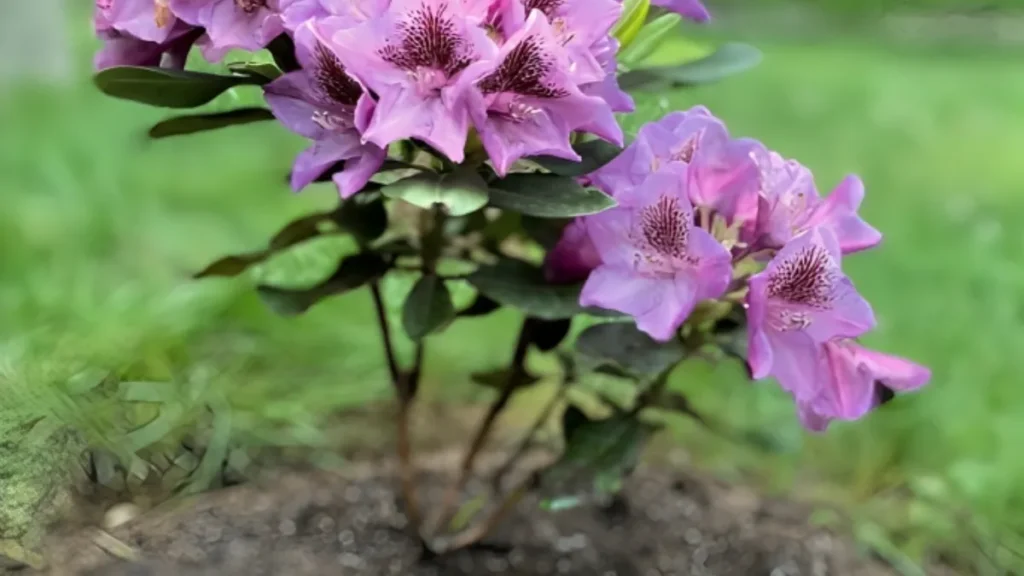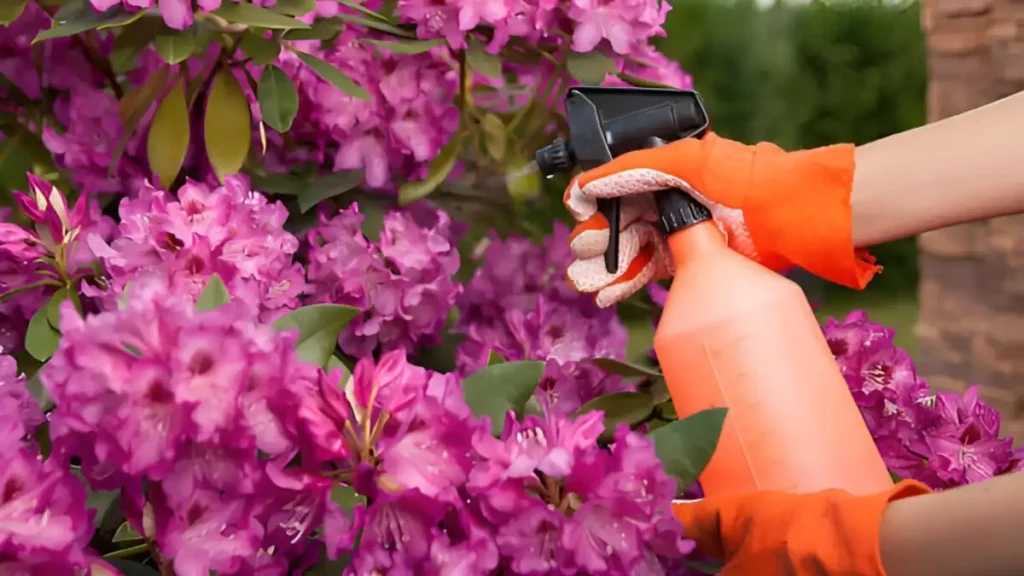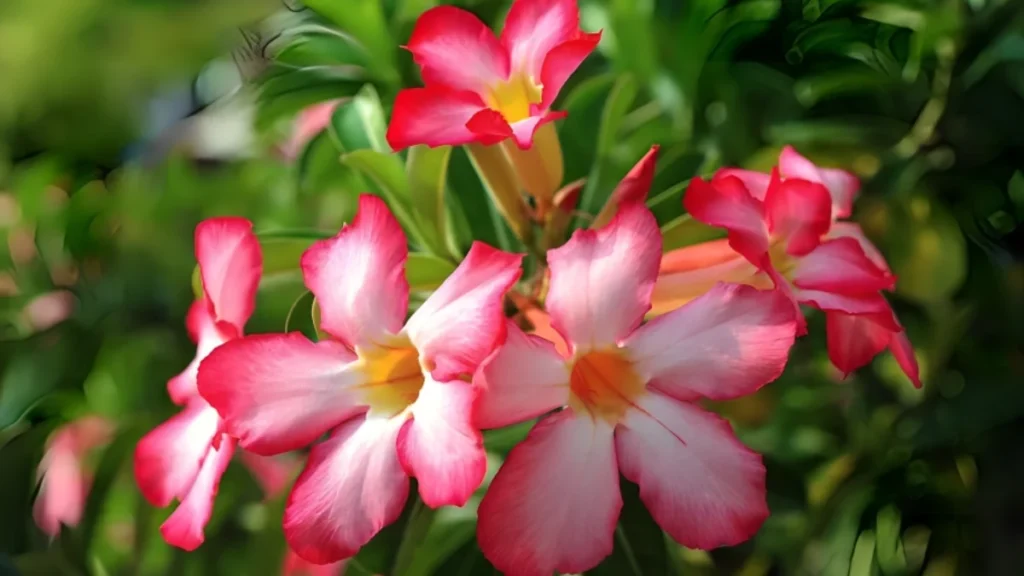The Azalea flower, a shade-loving shrub with elliptic leaves and loose branches, produces exquisite white, purple, yellow, and red flowers in spring gardens. It requires midday shade and at least four hours of sunlight daily and thrives in healthy, acidic, moist soil.
The best seasons to grow azalea plants are spring or early fall. Although species-specific growth rates vary, most develop somewhat slowly. Although it may take up to ten years for a one-gallon container plant to reach its full size, it typically flowers in its first year. Azaleas poison both humans and animals. They can become the focal point of any landscape with the correct maintenance. The best advice for growing azalea flower in your garden is provided here.
Azalea flower meaning:
Azalea flowers, which are frequently connected to femininity, are a sign of beauty, grace, and passion. They symbolize prosperity, good fortune, love, caring, and thanks. They also have a cautionary meaning, representing temperance. Azaleas are a popular symbol of natural balance and harmony.
When to plant azalea flower:
Azaleas are best planted in the spring or fall when temperatures are warm so that their roots can grow before the extremes of summer heat or winter cold. Pick a spot with some shade and acidic, well-drained soil that is rich in organic matter. Planting during these seasons ensures vibrant development and blossoms by reducing stress on the plant and assisting in its adaptation to its new surroundings.
Learn how to grow the azalea flower plant:
- Azaleas come in various varieties, including deciduous and evergreen. They are popular in warmer regions due to their never-lost leaves, while deciduous varieties are known for their vibrant fall colors.
- Azaleas prefer dappled sunlight and moderate shade. While too much darkness can prevent them from blooming, too much direct sunlight can burn their leaves. Choose a location in your garden that receives morning sunlight and afternoon shade for optimal effects.
- Azaleas require well-draining soil due to their short roots. Grow them in raised beds or containers with low pH or acidic environments. If the soil is alkaline or has a high pH, modify the growth area with pine needles, coffee grinds, sulfur, and aluminum sulfate. Peat moss is no longer recommended due to environmental issues.
Because azaleas are acidic soil (pH 4.5 to 6.0), peat moss is typically used as the planting medium for potted nursery plants. Additionally, the soil should have lots of organic matter, adequate fertility, and good drainage. Natural mulch, like pine bark mulch, is ideal for azaleas.
- Plants should be spaced two to five feet apart, depending on their type. To ensure the root ball’s top is level, excavate a hole twice as wide and deep as the root ball.

Advice on azalea flower care:
1. Azalea flower water requirements
Azaleas are water-demanding, especially during the first growing season. To ensure healthy roots, water frequently and monitor the soil for overflow. Drip irrigation is the best method, while mulch helps retain moisture, prevents waterlogging, and reduces watering in winter.
2. When to fertilize azalea flowers
Use fertilizer with caution. Knowing when and how to fertilize azaleas is crucial since they are shallow-rooted plants that might be harmed by excessive fertilizer—acid-forming fertilizer made especially for rhododendrons and azaleas. If required, fertilize again after blossoming and in the early spring.
Acidifying fertilizers are suitable for neutral or alkaline soils, with simple products containing nitrogen, phosphorus, and potassium. Azalea-Tone, a special fertilizer for azaleas, is also an appropriate choice.
3. When Is the best time to prune Azalea flower?
Pruning encourages healthy growth and preserves the shape of plants. It is better to prune azaleas after they have flowered. Pruning azaleas is best done after they have blossomed. Any growth that is taken away from a beautiful shape, such as suckers, can be removed. Pinch off new growth as soon as possible to enhance the shrub’s shape.
4. Protect against pests and diseases
Azalea diseases and problems exist, although they are generally hardy and low-maintenance plants. Nematodes, mealybugs, aphids, bark scales, spider mites, and lace bugs are common pests that can harm azaleas. Shrubs planted in full sun are more prone to be targeted by lace bugs.
Azalea diseases like root rot, rust, powdery mildew, leaf spots, and petal blight can be reduced by planting in well-draining areas and using mulch for water conservation.

Conclusion:
Azalea flowers may add elegance and beauty to your yard, making them a delightful experience to grow. These gorgeous plants will flourish and offer years of beauty if given the right care. These pointers will help you create the ideal conditions for your azaleas to thrive.
Certainly! If you’d like to learn more, please consider following our WhatsApp Channel: Harvest Gardening
A frequently asked questions:
Q1: What does azalea flower symbolize?
A1: Azalea blossoms stand for grace, passion, and restraint. They are frequently linked to femininity, plenty, and a reminder to look after oneself and those you love.
Q2: Do azaleas like full sun or shade?
A2: When taking care of them, one must take into account their shallow, fibrous root system. Azaleas thrive when exposed to full sun or partial shade (about four hours of sunlight).
Q3: Is azalea an indoor or outdoor plant?
A3: Depending on the kind, azaleas can be grown indoors or outdoors. While indoor azaleas need cool temperatures and bright, indirect light to grow, outdoor azaleas do best in landscapes with some shade.
Q4: Can you grow azaleas from cuttings?
A4: Azaleas can be grown from semi-hardwood cuttings in summer, soaked in rooting hormone, and planted in proper, draining soil, promoting root development.



